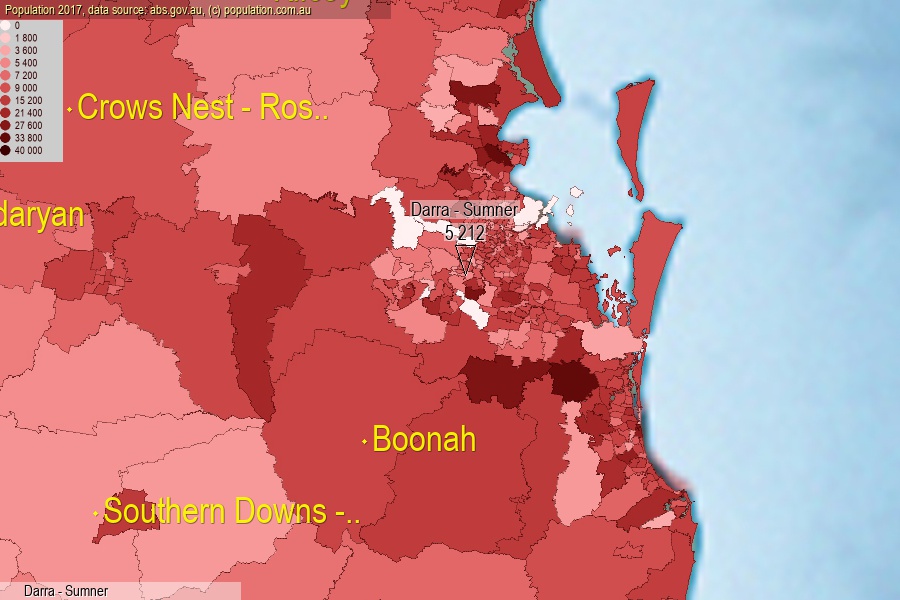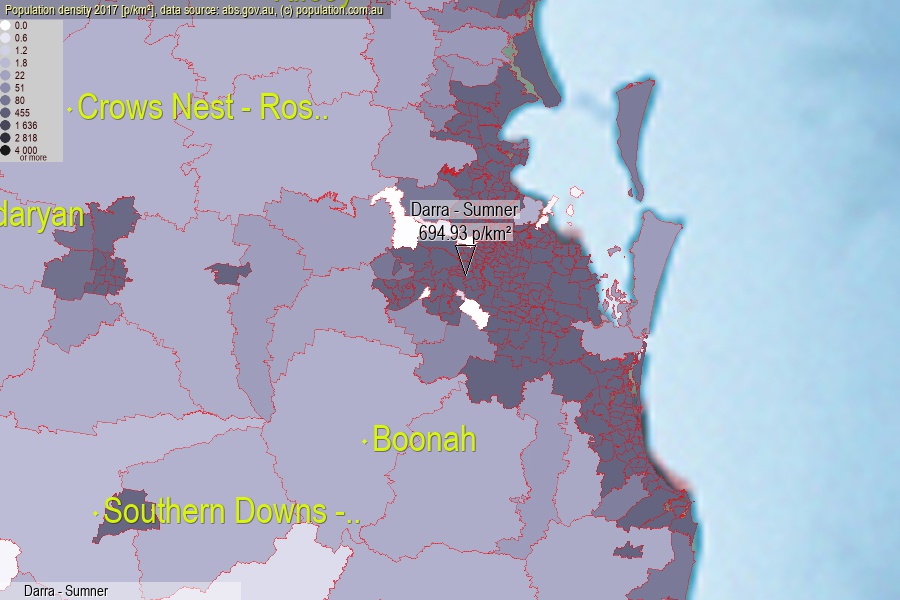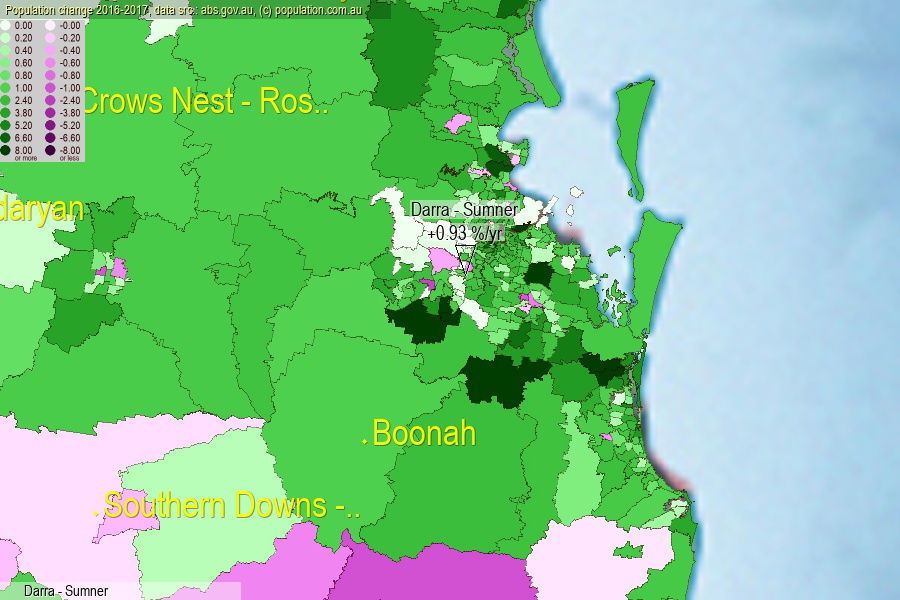 population.com.au
population.com.auLast official estimated population of Darra - Sumner (as Statistical Area Level 2) was 5 212 people (on 2017-06-30)[2]. This was 0.02% of total Australian population and 0.104% of QLD population. Area of Darra - Sumner is 7.50 km², in this year population density was 694.93 p/km² . If population growth rate would be same as in period 2016-2017 (+0.93%/yr), Darra - Sumner population in 2025 would be 5 612. [0]



Click to enlarge. Darra - Sumner is located in the center of the images.
Population [people], population density [p./km²] and population change [%/year] [2]
View borders » (new window) [4]
[1991-1992] -1.90 %/Yr.
[1992-1993] -2.39 %/Yr.
[1993-1994] -0.62 %/Yr.
[1994-1995] -1.45 %/Yr.
[1995-1996] -0.60 %/Yr.
[1996-1997] -2.54 %/Yr.
[1997-1998] -0.87 %/Yr.
[1998-1999] -0.55 %/Yr.
[1999-2000] +0.22 %/Yr.
[2000-2001] +2.44 %/Yr.
[2001-2002] +3.06 %/Yr.
[2002-2003] +2.08 %/Yr.
[2003-2004] +0.18 %/Yr.
[2004-2005] +2.62 %/Yr.
[2005-2006] +3.59 %/Yr.
[2006-2007] +1.79 %/Yr.
[2007-2008] +3.36 %/Yr.
[2008-2009] +2.64 %/Yr.
[2009-2010] +1.91 %/Yr.
[2010-2011] +1.00 %/Yr.
[2011-2012] +3.51 %/Yr.
[2012-2013] +2.02 %/Yr.
[2013-2014] +1.28 %/Yr.
[2014-2015] +2.50 %/Yr.
[2015-2016] +1.41 %/Yr.
[2016-2017] +0.93 %/Yr.
[0] Calculated with linear interpolation from officially estimated population
[1] Read more about SA2 and Australian Statistical Geography Standard (ASGS) on abs.gov.au
[2] Population data from Australian Bureau of Statistics (Population and density: 2017; change: 2016-2017)
[3] Digital Boundaries: Australian Statistical Geography Standard (ASGS) 2016.
[4] Border coordinates are simplifyed using Ramer-Douglas-Peucker algorithm.